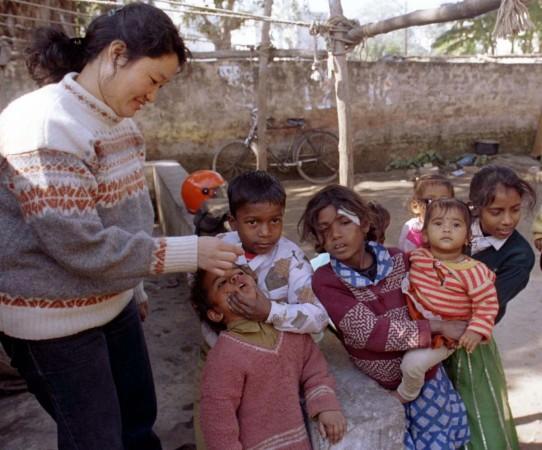
In India, nearly 1.2 million children died before reaching their fifth birthday in 2015. The country accounted for 20 percent of global deaths of child aged under five years in 2015. As per the estimates of the United Nations Children's Emergency Fund (UNICEF), 5.9 million children under the age of five (U-5) years died world over in 2015.
Pneumonia, an infectious respiratory disease, has emerged as a giant killer with more than 140,000 U-5 deaths attributed to the disease in 2015, V.K Paul, head, pediatrics department, All India Institute of Medical Sciences (AIIMS), Delhi wrote on news.trust.org.
Streptococcus pneumoniae (pneumococcus), the most common cause of bacterial pneumonia, caused nearly one-third of all pneumonia-related child deaths in India. Although the disease is completely preventable by vaccination, the government is yet to introduce pneumococcal conjugate vaccine (PCV) for use in the universal immunisation programme (UIP) or Mission Indradhanush, which was launched by the Narendra Modi government in 2015.
UIP currently includes free-of-cost vaccines, which provide protection against life threatening diseases like diphtheria, pertussis, tetanus, polio, measles, tuberculosis and Hepatitis B, but it does not include PCV.
Paul said both the World Health Organization (WHO) and the Indian Academy of Pediatrics (IAP) have recommended the inclusion of PCV for use in the national immunisation programmes, especially since the vaccine costs about Rs. 1,600-3,200 per dose, making it expensive and even inaccessible to a majority of the India's population.
He wrote that these high expenditures have burdened the poorest of Indian households. "As a result, only a negligible number of children with suspected pneumonia receive potentially life-saving antibiotic treatment. Even when treatment works, each illness weakens a child's immune system and negatively impacts their physical and cognitive development. Thus, the best approach is certainly to prevent pneumonia from occurring in the first place," he added.
The treatment for even one episode of pneumonia proves to be expensive for an average Indian household. The economic burden (for a child aged between two-36 months) on an Indian household due to treatment for a single episode of pneumonia is about Rs. 6,000 at a tertiary care hospital and Rs. 2,000 at a secondary care health facility in India, Paul said.
He added that around 130 countries, including Pakistan, Afghanistan, Nepal and Bangladesh, have already introduced PCV in their national immunisation programmes. India is the only South Asian country, which has yet not introduced PCV.
"The vaccines have been able to bring down the incidences of the pneumococcal pneumonia among U-5 children by 77 percent in the U.S and a decrease in the hospital admissions for all-cause pneumonia by 39 percent," he further said.
The introduction of vaccines in national health programmes also has high return on investment and is better for the welfare of society. Paul said a recent study conducted in 94 low- and middle-income countries found that for every US dollar invested in childhood immunisation, savings of $16 in healthcare costs can be expected.
He further said India's National Technical Advisory Group on Immunisation has already recommended the inclusion of PCV in Mission Indradhanush so that the vaccine reaches the remotest parts of the country where it is most needed.

















